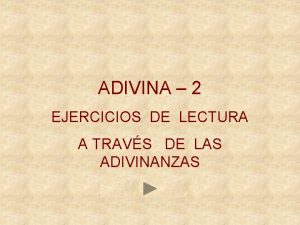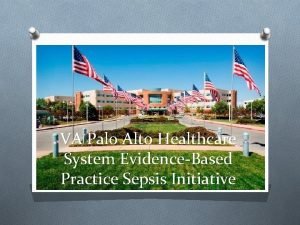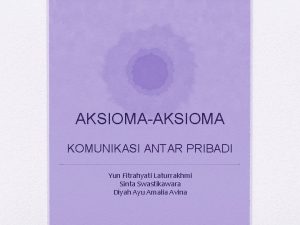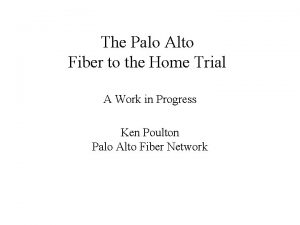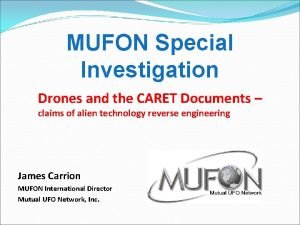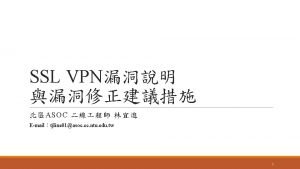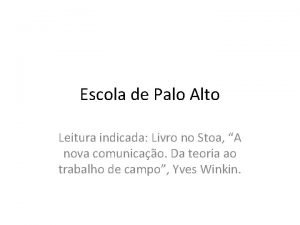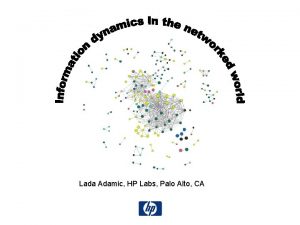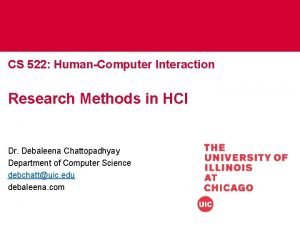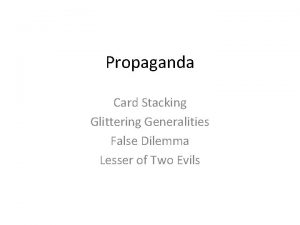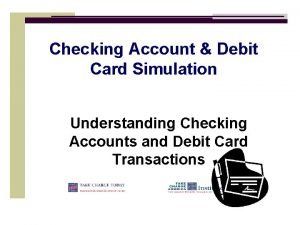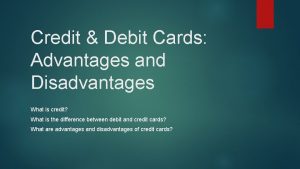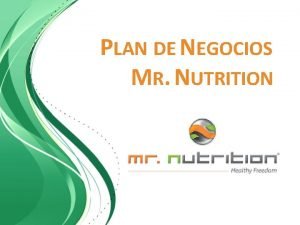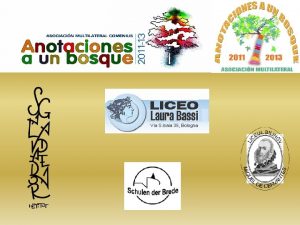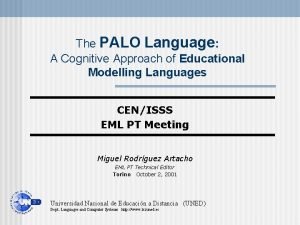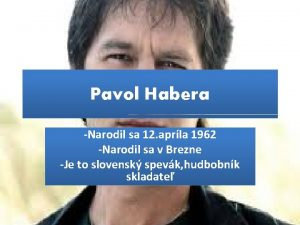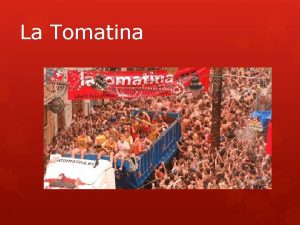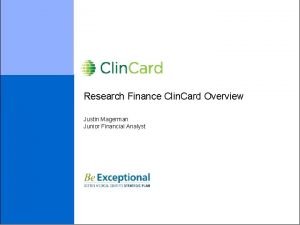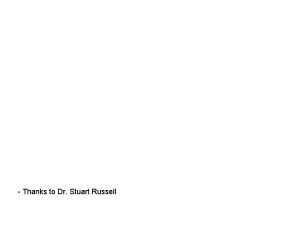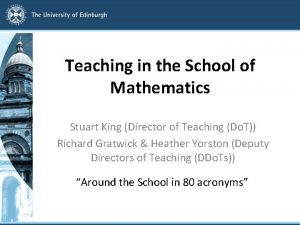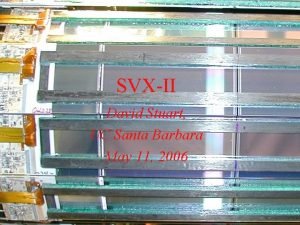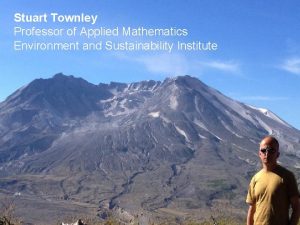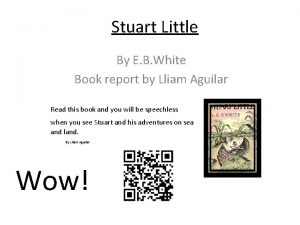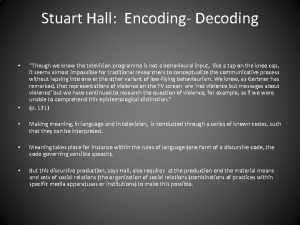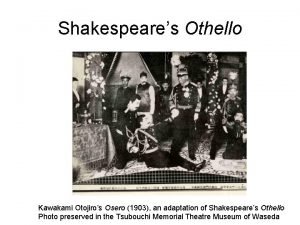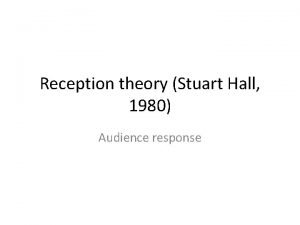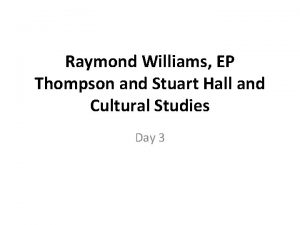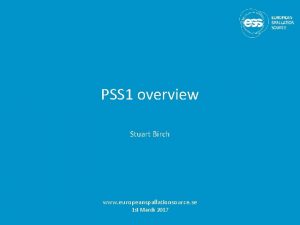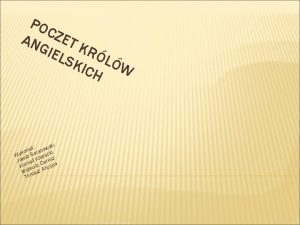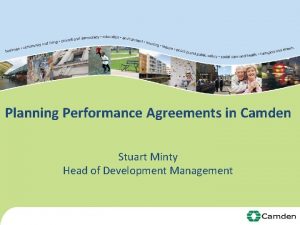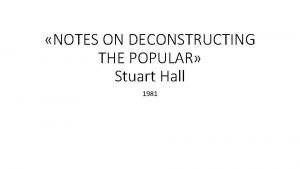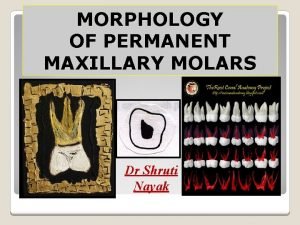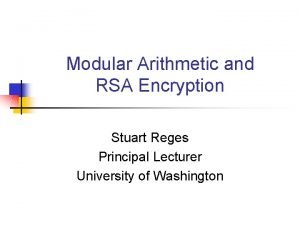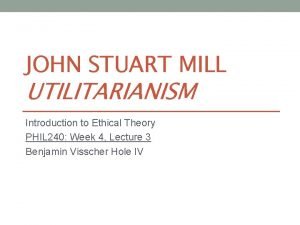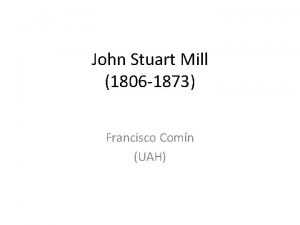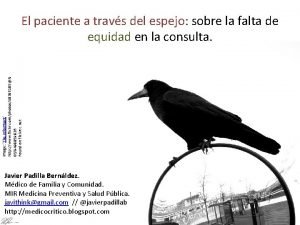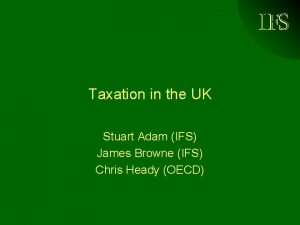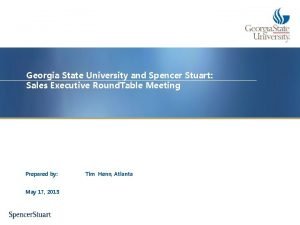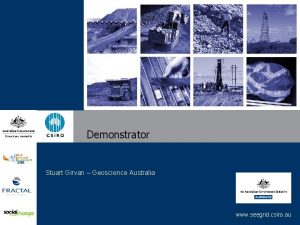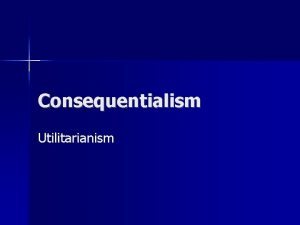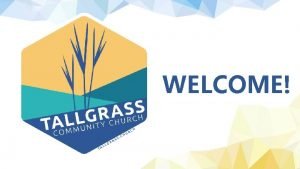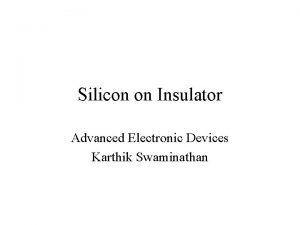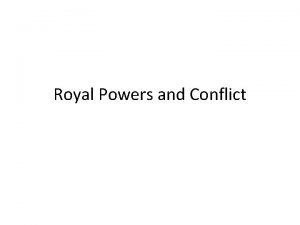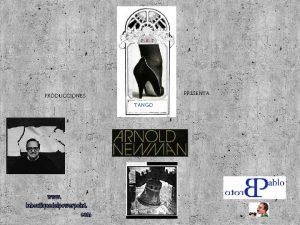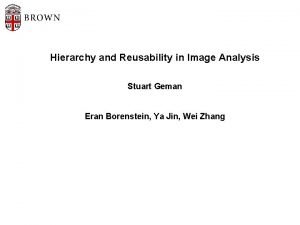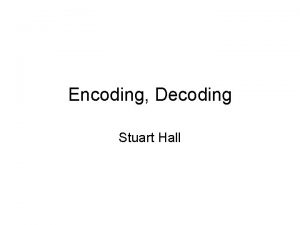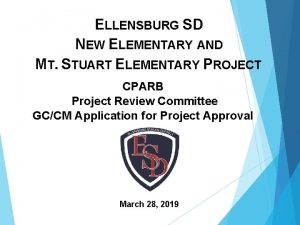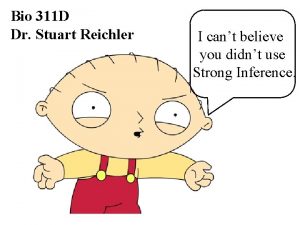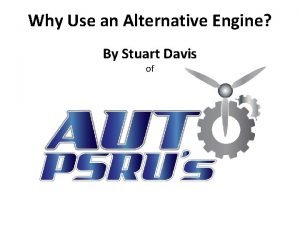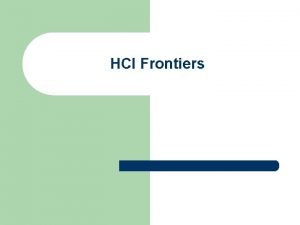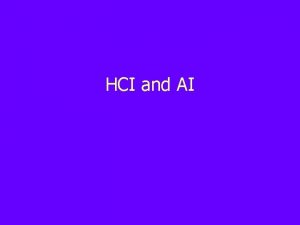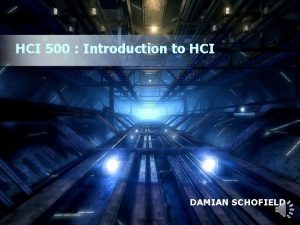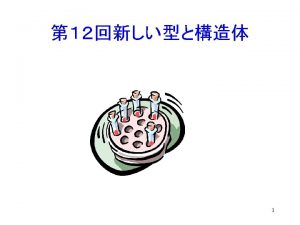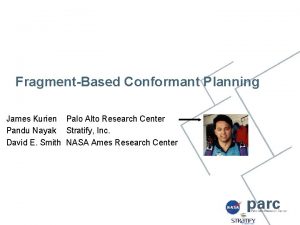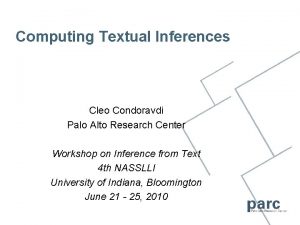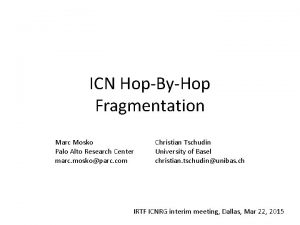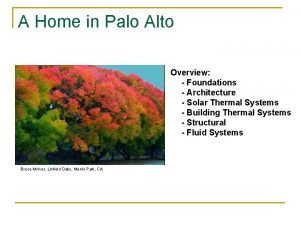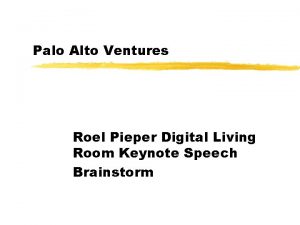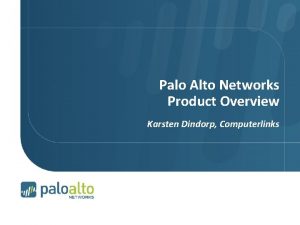Modeling in HCI Stuart Card Palo Alto Research































![OPTIMALITY THEORY Optimal Foraging Theory Information Energy [ Max Energy Time ] Max s. OPTIMALITY THEORY Optimal Foraging Theory Information Energy [ Max Energy Time ] Max s.](https://slidetodoc.com/presentation_image/f265a8a6751e581f3efa98deb838af0c/image-32.jpg)


























![Cost of Knowledge Characteristic Function Gain in Knowledge Cost [Time] s. card 59 Cost of Knowledge Characteristic Function Gain in Knowledge Cost [Time] s. card 59](https://slidetodoc.com/presentation_image/f265a8a6751e581f3efa98deb838af0c/image-59.jpg)


![Design Test (5 Blocks x 11 Trials) [Order counterbalanced] Warm-up (1 Block x 11 Design Test (5 Blocks x 11 Trials) [Order counterbalanced] Warm-up (1 Block x 11](https://slidetodoc.com/presentation_image/f265a8a6751e581f3efa98deb838af0c/image-62.jpg)


















- Slides: 80

Modeling in HCI Stuart Card Palo Alto Research Center (PARC) Stanford University, CS 376 November 19, 2009 s. card 1

Why Model? s. card 2

EXAMPLE: POINTING DEVICES Mouse. Engelbart and English s. card 3

TRADITIONAL METHOD: EVALUATION Sun Labs s. card 4

Engelbart s. card 5

EXPERIMENT: MICE ARE FASTEST s. card 6

WHY? (ENGINIEERING ANALYSIS) 3 Why these results? Movement Time (sec) Mouse Time to position mouse proportional to Fitts’ Index of Difficulty ID. 2 Proportionality constant = 10 bits/sec, same as hand. 1 T = 1. 03 +. 096 log 2 (D/S +. 5) sec 0 1 2 3 4 5 6 ID=log 2 (Dist/Size +. 5) s. card Therefore speed limit is in the eye-hand system, not the mouse. Therefore, mouse is a near optimal device. 7

ENGINEERING ANALYSIS (Modeling) n n n Insightful Accumulate into a discipline Generative s. card 8

CUMULATING INTO A DISCIPLINE Chapanis Report on HF n n n (National Research Council) Experimental methods alone are inadequate. Of 40 non-experimental techniques in human factors, only 2 were validated and taught. s. card 9

TO BE GENERATIVE n Task analysis Approximation Calculation n Zero-parameter predictions n n s. card 10

EXAMPLE: ALTERNATIVE DEVICES Headmouse: No chance to win s. card 11

ATTACHING POINTING DEVICE Use transducer on high bandwidth muscles s. card 12

EXAMPLE: STRUCTURING THE TASK SPACE BY PROJECTING THE MODEL Word Paragraph 0 Mouse (Arm) Headmouse (Head) Fingers Easy Char 500 TIME (msec) Period 1000 1500 2000 Hard s. card 13

EXAMPLE: BEATING THE MOUSE Use transducer on high bandwidth muscles s. card 14

DESIGNS FROM RESTRUCTURED TASK SPACE Work with Bill Moggridge, IDEO s. card 15

EXAMPLE: DESIGN SPACE s. card 16

MORPHOLOGICAL DESIGN: GENERATING ALL INPUT DEVICES s. card 17

POINTING DEVICES use and context human computer s. card 18

MODEL HUMAN PROCESSOR n n Processors and Memories applied to human Used for routine cognitive skill s. card 19

s. card 20

EXAMPLE: ZERO-PARAMETER CALC n n Problem: Inventor claims he invented 600 wpm typewriter. License and develop? Solution 1: Half stroke: t. M = 70 ms/char Whole stroke: t. M + t. M = 140 ms/char but if between hands, overlap: t. M = 70 ms = 131 words/min s. card 21

EXAMPLE: ZERO-PARAMETER CALC n n s. card Solution 2: (range calculation) Half stroke: t. M=70 [30~100] ms/char = 131 [308~92] words/min Conclusion: Bogus claim. Throw him out! 22

TASK ANALYSIS: GOMS task analysis (GOALS, OPERATORS, METHODS, SELECTION RUL GOAL: EDIT-MANUSCRIPT • repeat until done GOAL: EDIT-UNIT-TASK GOAL: ACQUIRE-UNIT-TASK GET-NEXT-PAGE GET-NEXT-TASK • if not remembered • if at end of page • if an edit task found GOAL: EXECUTE-UNIT-TASK GOAL: LOCATE-LINE • if task not on line [select : USE-QS-METHOD USE-LF-METHOD] GOAL: MODIFY-TEXT [select USE-S-COMMAND USE-M-COMMAND] s. card 23

PREDICTS TIME WITHIN ABOUT 20% s. card 24

SAE RECOMMENDED PRACTICE J 2365 n n Dario Salvucci Predict task times for car navigation systems Check compliance with SAE J 2364 (15 -Second Rule) Note: To estimate times while driving, multiply by 1. 3 to 1. 5. Based on GOMS and work by Paul Green at Univ. of Michigan Transportation Research Institute. s. card 25

SAE J 2365 OPERATOR TIMES s. card Paul Green UMITRI 26

LHX HELICOPTER SIMULATION (Corker, Davis, Papazian, & Pew, 1986) POP-UP-AND-SCAN POP-UP-FOR-SCAN [in parallel-do: LOOK-FOR POP-UP] STABILIZE-CRAFT HOVER-AND-SCAN [in-parallel-do: HOVER SCAN] GOMS used as task analysis to code doctrine s. card 27

IMMEDIATE BEHAVIOR use and context human computer s. card 28

HUMAN INFORMATION INTERACTION s. card 29

GOMS n n Routine cognitive skill Well-known path s. card 30

Information Search n n n Problem solving Heuristic search Exponential if don’t know what to do s. card 31
![OPTIMALITY THEORY Optimal Foraging Theory Information Energy Max Energy Time Max s OPTIMALITY THEORY Optimal Foraging Theory Information Energy [ Max Energy Time ] Max s.](https://slidetodoc.com/presentation_image/f265a8a6751e581f3efa98deb838af0c/image-32.jpg)
OPTIMALITY THEORY Optimal Foraging Theory Information Energy [ Max Energy Time ] Max s. card [ ] Useful info Time 32

Information Foraging Theory: People are information rate maximizers of benefits/costs Information has a cost structure s. card 33

INFORMATION PATCHES e. g. desk piles, Alta vista search list unlike animals foraging for food, humans can do patch construction s. card 34

CHARNOV’S MARGINAL VALUE THEOREM: max gain when slope of within-path gain g = average gain R (tangent in diagram) Gain R* g(t. W) Between-patch time t. B t* s. card Withinpatch time 35

BETWEEN-PATCH ENRICHMENT Gain R 2 Between-patch time t. B 1 t. B 2 t 2 * t 1 * R 1 g(t. W) Withinpatch time enrichment Example: arrange physical office efficiently s. card 36

WITHIN-PATCH ENRICHMENT Behavior adapts to cost structure of environment. Example: Better filtering of search hits Gain R 2 g 2(t. W) R 1 g 1(t. W) Between-patch time t. B t 2 * t 1 * s. card Withinpatch time 37

WITHIN-PATCH ENRICHMENT: INFORMATION SCENT Tokyo New York San Francis co perception of value and cost of a path to a source based on proximal cues s. card 38

RELEVANCE-ENHANCED THUMBNAILS n Emphasize text that is relevant to query n n Text callouts Enlarge text that might be helpful in assessing page n Enlarge headers Allison Woodruff s. card 39

PHASE TRANSITION IN NAVIGATION COSTS AS FUNCTION OF INFORMATION SCENT 100 Probability of choosing wrong link (f) 100 Number of Pages Visited per Level Number of pages visited 150 . 125 50 . 100 0 0 2 4 6 8 80 Linear Exponential 60 40 20 0 10 0 Depth 0. 05 0. 15 0. 2 f Notes: Average branching factor = 10 Depth = 10 s. card 40

IMPORTANCE FOR WEB DESIGN Jarad Spool, UIE s. card 41

MACHINE MODELING OF INFORMATION SCENT Information Goal new cell medical patient Link Text treatments dose procedures beam s. card 42

PREDICTION OF LINK CHOICE 35 50 30 25 20 R 2 = 0. 72 15 10 5 0 0 5 10 15 20 25 Observed frequency 30 35 Predicted frequency (a) Parc. Web (b) Yahoo 40 30 20 R 2 = 0. 90 10 0 0 s. card 10 20 30 Observed frequency 40 50 43

USER FLOW MODEL User need (vector of goal concepts) Determine relevance of documents Calculate Pr(Link Choice) for each page Examine user patterns Start users at page Flow users through the network . 5. 2 . 3 s. card 44

BLOODHOUND PROJECT INPUT Starting Point: www. xerox. com Task: look for “high end copiers” OUTPUT usability metrics Chi, et al s. card 45

Information Cost Landscapes Exercise s. card 46

Moving to a Patch Gain Overall rate of gain (R) gain(patch foraging time) Time Travel s. card Optimal patch foraging time 47

How long to get to any one item in a patch? total items in patches Gain t 1 time to get one item s. card n items accessible Time t 2 ave. time for patches 48

Example: Rectangular patch of patches D 1 D 2 D 3 D 4 D 5 D 6 D 7 D 24 C 1 C 2 C 3 C 4 C 5 D 8 D 23 C 16 B 1 B 2 B 3 C 6 D 9 B 4 C 7 D 10 A D 22 C 15 B 8 D 21 C 14 B 7 B 6 B 5 C 8 D 11 D 20 C 13 C 12 C 11 C 10 C 9 D 12 D 19 D 18 D 17 D 16 D 15 D 14 D 13 10 items/patch s. card 49

Task Names (Patch Names) D 1 D 2 D 3 D 4 D 5 D 6 D 7 D 24 C 1 C 2 C 3 C 4 C 5 D 8 D 23 C 16 B 1 B 2 B 3 C 6 D 9 D 22 C 15 B 8 A B 4 C 7 D 10 D 21 C 14 B 7 B 6 B 5 C 8 D 11 D 20 C 13 C 12 C 11 C 10 C 9 D 12 D 19 D 18 D 17 D 16 D 15 D 14 D 13 s. card 50

Distances From Patch A 3Ö 2 Ö 13 Ö 8 Ö 13 3Ö 2 Ö 13 2Ö 2 Ö 5 2Ö 2 Ö 13 Ö 8 Ö 5 Ö 2 1 Ö 2 Ö 5 Ö 8 3 2 1 0 1 2 3 Ö 8 Ö 5 Ö 2 1 Ö 2 Ö 5 Ö 8 Ö 13 2Ö 2 Ö 5 2Ö 2 Ö 13 3Ö 2 Ö 13 Ö 8 Ö 13 3Ö 2 s. card 51

Patch Distances 4. 24 3. 61 2. 83 3. 00 2. 83 3. 61 4. 24 3. 61 2. 83 2. 24 2. 00 2. 24 2. 83 3. 61 2. 83 2. 24 1. 14 1. 00 1. 14 2. 24 2. 83 3. 00 2. 00 1. 00 0. 00 1. 00 2. 00 3. 00 2. 83 2. 24 1. 14 1. 00 1. 14 2. 24 2. 83 3. 61 2. 83 2. 24 2. 00 2. 24 2. 83 3. 61 4. 24 3. 61 2. 83 3. 00 2. 83 3. 61 4. 24 s. card 52

COKCF Calculation Table TASK COST (s) N Items A 0. 00 10 B 1 1. 41 10 B 2 1. 00 10 B 3 1. 41 10 B 4 1. 00 10 B 5 1. 41 10 B 6 1. 00 10 B 7 1. 41 10 B 8 1. 00 10 C 1 2. 83 10 . . s. card 53

COKCF Calculation Table Sorted by Cost TASK COST (s) N Items A 0. 00 10 B 2 1. 00 10 B 4 1. 00 10 B 6 1. 00 10 B 8 1. 00 10 B 1 1. 41 10 B 3 1. 41 10 B 5 1. 41 10 B 7 1. 41 10 C 2 2. 24 10 … … … s. card 54

Cost-of-Knowledge Characteristic Function (COKCF) s. card 55

COCKF Calculation Table Sorted by Cost TASK COST (s) N Items A 0. 00 10 B 2 1. 00 10 B 4 1. 00 10 B 6 1. 00 10 B 8 1. 00 10 B 1 1. 41 10 B 3 1. 41 10 B 5 1. 41 10 B 7 1. 41 10 C 2 2. 24 10 . . . s. card . . . 0 0. 5 (10 items) 1 0. 5 (80 items) 2 0. 5 56

COCKF Calculation Table Grouped by Class Interval TASK 0 0. 5 1 0. 5 2 0. 5 COST (s) 0. 00 1. 00 2. 00 N Items 10 80 120 3 0. 5 4 0. 5 3. 00 4. 00 160 120 s. card 57

Smoothed COKCF s. card 58
![Cost of Knowledge Characteristic Function Gain in Knowledge Cost Time s card 59 Cost of Knowledge Characteristic Function Gain in Knowledge Cost [Time] s. card 59](https://slidetodoc.com/presentation_image/f265a8a6751e581f3efa98deb838af0c/image-59.jpg)
Cost of Knowledge Characteristic Function Gain in Knowledge Cost [Time] s. card 59

Spiral Calendar s. card 60

COCKF Calculation Table TASK COST (s) N Items Days Before 7 Sep 1993 1) 2) 3) 4) 5) 6) 7) 8) 9) 10) 11) 1 (6 Sep 1993) 3 (4 Sep 1993) 10 (28 Aug 1993) 30 (8 Aug 1993) 100 (30 May 1993) 300 (11 Nov 1992) 1, 000 (12 Dec 1990) 3, 000 (25 Sep 1982) 10, 000 (22 Apr 1966) 30, 000 (10 Jul 1911) 100, 000 (23 Nov 1719) s. card 61
![Design Test 5 Blocks x 11 Trials Order counterbalanced Warmup 1 Block x 11 Design Test (5 Blocks x 11 Trials) [Order counterbalanced] Warm-up (1 Block x 11](https://slidetodoc.com/presentation_image/f265a8a6751e581f3efa98deb838af0c/image-62.jpg)
Design Test (5 Blocks x 11 Trials) [Order counterbalanced] Warm-up (1 Block x 11 Trials) s. card 62

COCKF Calculation Table TASK COST (s) N Items Days Before 7 Sep 1993 1) 2) 3) 4) 5) 6) 7) 8) 9) 10) 11) 1 (6 Sep 1993) 3 (4 Sep 1993) 10 (28 Aug 1993) 30 (8 Aug 1993) 100 (30 May 1993) 300 (11 Nov 1992) 1, 000 (12 Dec 1990) 3, 000 (25 Sep 1982) 10, 000 (22 Apr 1966) 30, 000 (10 Jul 1911) 100, 000 (23 Nov 1719) 5. 6 11. 1 14. 3 14. 6 14. 4 16. 6 17. 8 21. 1 21. 2 20. 7 24. 3 s. card 63

Raw Results 30 ACCESS TIME (s) 25 20 15 10 5 0 101 102 103 104 105 106 DAYS BACK s. card 64

Many Interfaces for Foraging are Direct Walk Display 1 Display 2 Click, Gesture, Etc Display 3 Click, Gesture, Etc Examples: WWW, Mac Finder, Hyper. Card s. card 65

GOMS ANALYSIS n Century-Method : : = GOAL: DO-TASK n GOAL: ACCESS-DAY-CALENDAR n n GET-YEAR GOAL: SELECT-CENTURY (1700’s) n n n GET-YEAR GOAL: SELECT-DECADE (1710’s) n n n POINT-TO (Month=1700 -1790 s) GET-DAY GOAL: SELECT-WEEK () n n POINT-TO (Year=1700 -1790 s) GET-MONTH GOAL: SELECT-MONTH (November) n n POINT-TO (Decade=1710 -1719) GET-YEAR GOAL: SELECT-YEAR (1719) n n POINT-TO (Century=1700 -1790 s) ==> <Century-Display> . . . if necessary ==> <Decade-Display> . . . if necessary ==> <Year-Display> . . . if necessary ==> <Month-Display> . . . if necessary POINT-TO (Week=contains 23) GET-DAY GOAL: SELECT-DAY (23) n . . . if necessary ==> <Week-Display> . . . if necessary POINT-TO (Day=23) } } } Cycle 1 Cycle 2 Cycle 3 Cycle 4 Cycle 5 Cycle 6 ==> <Day-Display> s. card 66

COCKF Calculation Table TASK COST (s) N Items Days Before 7 Sep 1993 1) 2) 3) 4) 5) 6) 7) 8) 9) 10) 11) 1 (6 Sep 1993) 2 (4 Sep 1993) 10 (28 Aug 1993) 30 (8 Aug 1993) 100 (30 May 1993) 300 (11 Nov 1992) 1, 000 (12 Dec 1990) 3, 000 (25 Sep 1982) 10, 000 (22 Apr 1966) 30, 000 (10 Jul 1911) 100, 000 (23 Nov 1719) 5. 6 11. 1 14. 3 14. 6 14. 4 16. 6 17. 8 21. 1 21. 2 20. 7 24. 3 (1 cycle) (2 cycles) (3 cycles) (4 cycles) (5 cycles) (6 cycles) s. card 67

Arranged by Interaction Cycles 30 ACESS TIME (s) 25 20 Century 15 Year 10 Decade Month Week 5 Day 0 101 102 103 104 DAYS BACK s. card 105 106 68

COCKF Calculation Table (Grouped) TASK COST (s) N Items Days Before 7 Sep 1993 1) Day (1 cycle) 2) Week (2 cycles) 3) Month (3 cycles) 6) Year (4 cycles) 8) Decade (5 cycles) 11) Century (6 cycles) 5. 6 11. 1 14. 4 17. 2 21. 0 24. 3 (1 cycle) (2 cycles) (3 cycles) (4 cycles) (5 cycles) (6 cycles) s. card 69

Access Time = 3. 3 + 3. 5 • NCycles 30 ACESS TIME (s) 25 20 15 10 5 0 0 2 4 6 NUMBER OF SELECT-DISPLAY CYCLES s. card 70

COCKF Calculation Table (Grouped) TASK COST (s) N Items Days Before 7 Sep 1993 1) Day (1 cycle) 2) Week (2 cycles) 3) Month (3 cycles) 6) Year (4 cycles) 8) Decade (5 cycles) 11) Century (6 cycles) 5. 6 11. 1 14. 4 17. 2 21. 0 24. 3 (1 cycle) (2 cycles) (3 cycles) (4 cycles) (5 cycles) (6 cycles) s. card 1 7 30 365 3, 562 36, 525 71

INFORMATION ACCESSIBLE (Days) 107 Spiral Calendar 106 105 104 103 102 101 100 0 20 40 60 80 ACCESS TIME = COST (s) s. card 100 120 72

Sun CM n Same task n Same Procedure n Restricted to Direct Walk methods Results of GOMS analysis: Access Time = 1. 3 + 3. 9 m + 1. 4 P + 0. 36 B sec where m = number of point, menu pull-down, select P = number of point + select B = number of button presses s. card 73

INFORMATION ACCESSIBLE (Days) 107 Spiral Calendar 106 CM 105 104 103 102 101 100 0 20 40 60 COST (s) s. card 80 100 120 74

No Week Calendar (calculated) INFORMATION ACCESSIBLE (Days) 107 Spiral Calendar 106 105 CM 104 103 102 101 100 0 20 40 60 COST (s) s. card 80 100 120 75

INFORMATION ACCESSIBLE (Days) 107 2 sec User-Action Cycle (calculated) 106 Spiral Calendar 105 CM 104 103 102 101 100 0 20 40 60 COST (s) s. card 80 100 120 76

2 sec User-Action Cycle + No Week (calculated) INFORMATION ACCESSIBLE (Days) 107 106 105 104 103 102 101 100 0 20 40 60 COST (s) s. card 80 100 120 77

Summary n n n Cost of Knowledge Characteristic Function (COKCF) is metric for cost landscape Can use to measure Can use for task analysis s. card 78

Another COKCF calculation s. card 79

SUMMARY: ENGINEERING ANALYSIS / MODLING s. card 80
 Van cargadas vienen y en el camino no se detienen
Van cargadas vienen y en el camino no se detienen Sepsis care near palo alto
Sepsis care near palo alto Palo alto traffic shaping
Palo alto traffic shaping Palo alto networks next generation security platform
Palo alto networks next generation security platform Palo alto networks certified network security consultant
Palo alto networks certified network security consultant Mazhab palo alto
Mazhab palo alto Sinkhole palo alto
Sinkhole palo alto Palo alto policy based forwarding
Palo alto policy based forwarding Palo alto firewall training ppt
Palo alto firewall training ppt Palo alto planning
Palo alto planning Cyber attack lifecycle palo alto
Cyber attack lifecycle palo alto Suspicious dns query
Suspicious dns query Palo alto trial
Palo alto trial 4th industrial revolution
4th industrial revolution Sunshares palo alto
Sunshares palo alto Isaac caret
Isaac caret Palo alto magnifier
Palo alto magnifier Fx palo alto laboratory
Fx palo alto laboratory Stateful vs stateless firewall palo alto
Stateful vs stateless firewall palo alto Palo alto free certification
Palo alto free certification Markus laaksonen
Markus laaksonen Palo alto ssl vpn
Palo alto ssl vpn Escola palo alto
Escola palo alto Palo alto utilities
Palo alto utilities Palo alto traps gartner
Palo alto traps gartner Palo alto enterprise license agreement
Palo alto enterprise license agreement Lada adamic
Lada adamic Fatpipe logo
Fatpipe logo Richer interaction in hci
Richer interaction in hci Modeling rich interaction in hci
Modeling rich interaction in hci Helen c erickson
Helen c erickson Dimensional modeling vs relational modeling
Dimensional modeling vs relational modeling Research methods in hci
Research methods in hci Card stacking examples
Card stacking examples Checkbook simulation answers
Checkbook simulation answers Debit card advantages and disadvantages
Debit card advantages and disadvantages Mr nutricion
Mr nutricion Refranes del bosque
Refranes del bosque Dr paul palo
Dr paul palo Palo
Palo Palo habera vek
Palo habera vek Palo jabon tomatina
Palo jabon tomatina Clin card
Clin card What is ai?
What is ai? Stuart king edinburgh
Stuart king edinburgh David stuart ucsb
David stuart ucsb Stuart townley
Stuart townley Summary of stuart little book
Summary of stuart little book Stuart hall encoding decoding example
Stuart hall encoding decoding example Iago whispering inn othello's ear
Iago whispering inn othello's ear Halls reception theory
Halls reception theory Raymond james stuart
Raymond james stuart Stuart birch
Stuart birch Dynastia anglosaska
Dynastia anglosaska Stuart minty planning consultant
Stuart minty planning consultant Stuart hall popular culture summary
Stuart hall popular culture summary Transverse ridge maxillary first molar
Transverse ridge maxillary first molar Stuart reges
Stuart reges Giacomo 1 stuart
Giacomo 1 stuart Stuart priestley rbkc
Stuart priestley rbkc John stuart mill ethics
John stuart mill ethics John stuart mill (1806-1873)
John stuart mill (1806-1873) John stuart mill teoría
John stuart mill teoría Stuart adam ifs
Stuart adam ifs Tim henn spencer stuart
Tim henn spencer stuart Tudor and stuart monarchs
Tudor and stuart monarchs Maria stuart ektefelle
Maria stuart ektefelle Stuart girvan
Stuart girvan Principle of utility john stuart mill
Principle of utility john stuart mill Dr stuart sheifer
Dr stuart sheifer Dustin kensrue rejoice
Dustin kensrue rejoice Stuart staniford
Stuart staniford Mary stuart death mask
Mary stuart death mask Stuart davis
Stuart davis Stuart branigan
Stuart branigan Fodor
Fodor Stuart hall encoding/decoding
Stuart hall encoding/decoding Mt stuart elementary
Mt stuart elementary Stuart keeling
Stuart keeling Stuart reichler
Stuart reichler Stuart davis
Stuart davis
